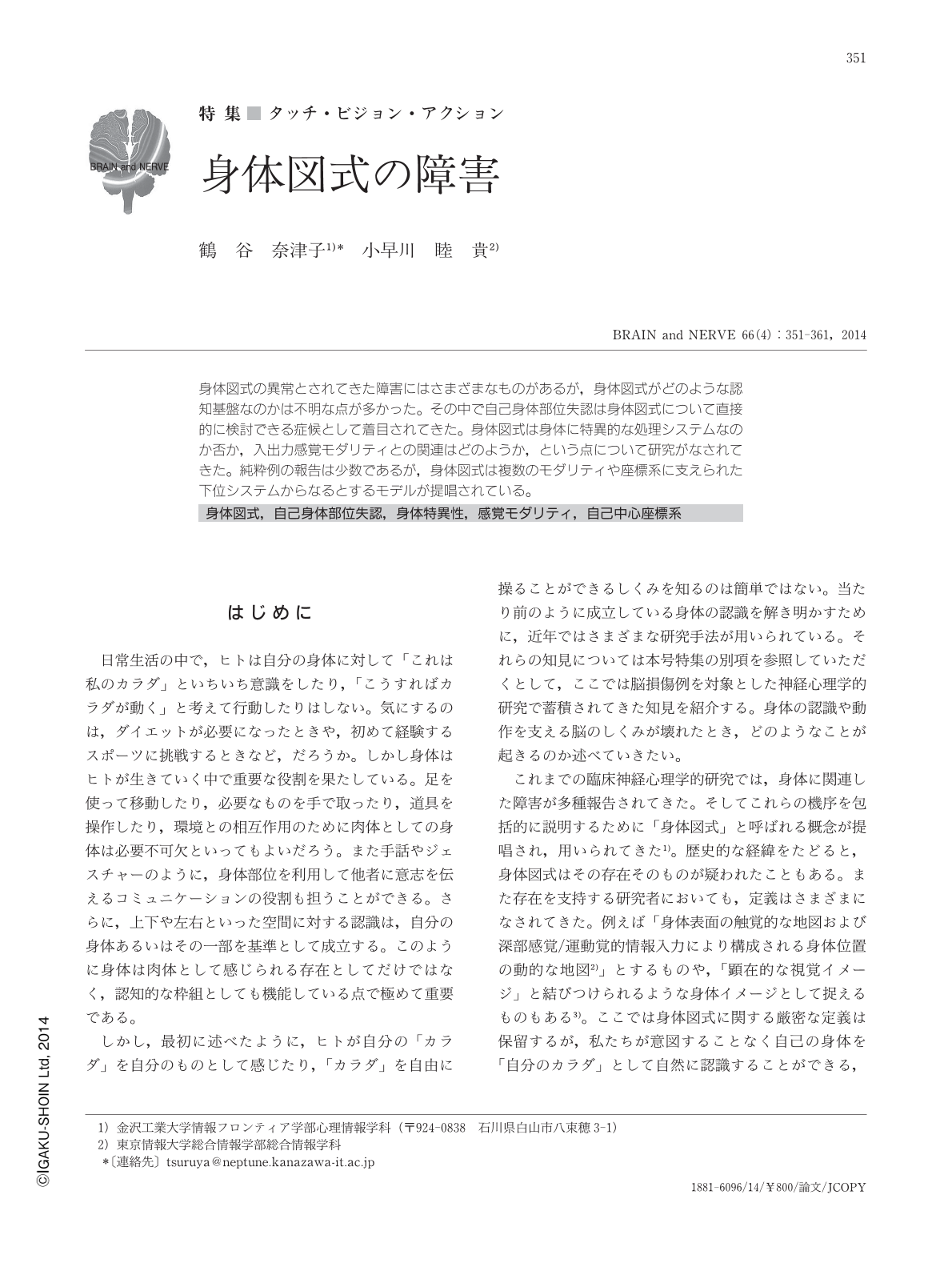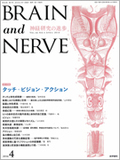Japanese
English
- 有料閲覧
- Abstract 文献概要
- 1ページ目 Look Inside
- 参考文献 Reference
身体図式の異常とされてきた障害にはさまざまなものがあるが,身体図式がどのような認知基盤なのかは不明な点が多かった。その中で自己身体部位失認は身体図式について直接的に検討できる症候として着目されてきた。身体図式は身体に特異的な処理システムなのか否か,入出力感覚モダリティとの関連はどのようか,という点について研究がなされてきた。純粋例の報告は少数であるが,身体図式は複数のモダリティや座標系に支えられた下位システムからなるとするモデルが提唱されている。
Abstract
A variety of disorders have been associated with the concept of body schema. However, this concept has been interpreted in many ways, and there is no consensus on the nature and cognitive mechanisms of body schema. Historically, two major issues have been discussed. One was the body-specificity of the body schema, and the other was the relationship between input and output modality. Autotopagnosia, an inability to localize and orient different parts of the body, has been a focus of attention because it is thought to provide insight into the function of body schema. Although there have not been many cases of pure autotopagnosia, a double dissociation indicating the independence of body-specific system. There are a few working hypotheses for cognitive models of body schema, which can explain the different types of autotopagnosia. One model includes multiple representation subsystems for body processing, while another assumes the use of intrinsic and extrinsic egocentric coordinates to maintain on-line processing for body state. The consistency of these accounts should be examined in light of extensive neuroimaging and psychological data, to construct a plausible model for body schema.

Copyright © 2014, Igaku-Shoin Ltd. All rights reserved.


